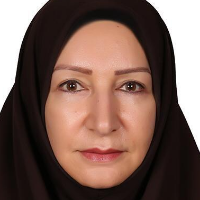Assessing of the multi-purpose use of the rangelands representing the semi-steppe region of the country
Multipurpose use of rangelands is one of the new challenges facing rangeland users, according to which grazing pressure in rangelands can be reduced and an important step can be taken to increase the welfare and empowerment of rangelands, preserve ecosystems and improve ecosystem services related to them. Therefore, the present study aims to evaluate the potential of rangelands in the semi-steppe region, for the use of medicinal plants and forage production, in 12 habitats of the country (including: Arshad Chamanof Sahand, Shiveh Soor of Marghavar of Urmia, DoshKharat of Golestankooh, Derakhtak of Friedan, Aliabad Moshiri of Koohrang, Freeze heights of Binalood, Khoraklat of Razavi Khorsan, Joladak of Alamut, Sar Ali Abad of Gorgan, Rineh of Larijan, Otaghsara of Larijan and Kaboudcheshmeh of Savadkuh) were performed. For this purpose, after measuring the vegetation and estimating the production of medicinal plants; based on ecological, economic and social criteria and indicators; the suitability of each habitat for the use of medicinal plants was determined. Then, by comparing the suitability class of habitats for the use of medicinal plants and their suitability class for livestock grazing, a decision was made regarding the priority of the type of rangeland use. Overall; 17% of habitats, by all criteria, are unsuitable for the use of medicinal plants. 33% have good suitable, 25% have medium suitable and 25% have low suitable. The results suggest that not all rangeland habitats are suitable for the use of medicinal plants, and not all of them are suitable for the use of medicinal plants. This issue should be considered in the policies related to the harvest of medicinal plants from the rangelands, and the use of medicinal plants should be allowed, taking into account the suitability of the rangeland. In rangelands with potential for medicinal plants, it is possible to reduce the number of livestock and grazing livestock in accordance with ecological principles; he used medicinal plants along with livestock. This, in addition to compensating for the economic problems caused by reducing the number of livestock, will also restore vegetation and enhance the richness of medicinal plants.
-
Effects of climate change on the habitat of Artemisa Aucheri Boiss based on climate prediction model in Alborz Rangeland habitats , Mazandaran province
*
Journal of Environmental Science Studies, -
Investigation of variability in yield and yield components and adaptability of different species of savory (Satureja spp.) cultivated in Kurdistan province
F. Houshidari *, S. R. Tabaei-Aghdaei, F. Sefidkon, B. Yousefi
Iranian Journal of Medical and Aromatic Plants, -
Comparison of the effect of grazing removal on soil (seed bank, chemical and biological characteristics) in two saline and non-saline regions
Shadi Hazhir, Reza Erfanzadeh *, , Bahar Razavi, Peter Torok
Journal of Range and Watershed Management, -
Investigating the Livelihood Improvement Strategies of Rangeland Users: Application of Multi-Purpose Use of Rangelands (Case Study: Larak Rangeland, Alborz Province)
Hossein Moradi, *, Mohammad Jafari, Esmail Alizadeh, Abbas Rahdan
Journal of Rangeland, -
Evaluation of Morphological Traits and Essential Oil Diversity in Different Populations of Hymenocrater oxyodontus Rech.f.
Mina Rabie*, Younes Asri,
Journal of Rangeland, -
Modeling the Canopy Cover and Aboveground Net Primary Production of Plant Life forms in Rangelands of Ardabil Province
Farid Dadjou, Ardavan Ghorbani *, Mehdi Moameri, Hosein Arzani, Raoof Mostafazadeh, Zeinab Hazbavi
Arid regions Geographic Studies,




